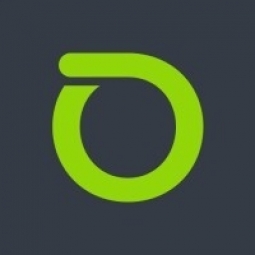公司规模
Large Corporate
地区
- America
国家
- United States
产品
- nGeniusONE® Service Assurance platform
- InfiniStreamNG® software appliances
- nGenius® Packet Flow Operating System (PFOS)
- NETSCOUT® VaaS support
技术栈
- Software-defined networking (SDN)
- Cloud Services
- SaaS/UCaaS applications
实施规模
- Enterprise-wide Deployment
影响指标
- Productivity Improvements
- Customer Satisfaction
- Digital Expertise
技术
- 平台即服务 (PaaS) - 连接平台
适用行业
- 教育
- 医疗保健和医院
适用功能
- 人力资源
- 商业运营
用例
- 远程协作
- 远程控制
服务
- 云规划/设计/实施服务
- 系统集成
关于客户
这所医学院在全国排名靠前,在国际上享有盛誉,数十年来培养了数千名医学生。他们是一所学术、研究和社区影响力都一流的大学。住院医生和研究员受益于与当地世界一流的教学医院合作,这些医院提供多个领域的专业服务,包括心脏病学、神经病学、癌症、儿科和骨科。与许多教育机构一样,该学院的网络和数据中心运营对于提供成功的学术服务以及教师、学生和大学工作人员之间的沟通至关重要。他们的 IT 团队致力于保持数字技术的高标准,因此实施了软件定义网络 (SDN) 基础设施来支持他们的学习管理系统 (LMS) 以及业务应用程序,这些应用程序托管在他们的数据中心、云端和合作伙伴处。
挑战
在整个 COVID 疫情期间,大学应用程序和网络服务的使用方式发生了多次变化,从用户完全在校园内,到一些在校园内,一些在校外,再到大多数远程访问资源。这为满足其服务在响应性、可用性和可靠性方面的高质量标准带来了各种挑战。用户需要使用 LMS 应用程序获得高质量的数字体验来提交作业和报告成绩;使用 Microsoft Office 365 进行电子邮件、协作和内容应用程序;以及使用语音和协作服务,如 MS Teams、Zoom、Google Meet 等。IT 团队发现这些服务在应用程序级别可见性方面存在差距,这使得很难确保体验质量并在出现问题时进行故障排除。此外,他们希望能够以知情的方式与一些第三方技术供应商合作,提供 WAN 和 Internet 访问、云服务、软件即服务 (SaaS) 应用程序、语音和统一通信即服务 (UCaaS) 应用程序。
解决方案
医学院的 IT 团队选择了 NETSCOUT 的 nGeniusONE 服务保障解决方案,利用来自 InfiniStreamNG (ISNG) 设备的智能数据进行实时分析,这些设备监控着整个大学数据中心和网络环境中的战略点。NETSCOUT 的可视化即服务 (VaaS) 支持组织也参与其中,以确保更快地实施、配置和运行新的可视化解决方案。在监控和故障排除学生服务方面,展示快速的价值实现时间至关重要,以实现最高质量的性能水平。医学院的 IT 团队还选择了 NETSCOUT 数据包流操作系统 (PFOS) 软件,用于认证的 PFS 5010,以部署在数据中心,利用 WAN 和防火墙接口、关键数据中心核心接口和无线访问控制器 (WAC) 链路将流量数据包从网络传递到 ISNG 设备,以实现实时可视化、分类、故障排除和容量规划分析。他们还跨越边界叶交换机来处理应用程序/服务器场流量,以协助故障排除和用户体验保证。
运营影响

Case Study missing?
Start adding your own!
Register with your work email and create a new case study profile for your business.
相关案例.

Case Study
Hospital Inventory Management
The hospital supply chain team is responsible for ensuring that the right medical supplies are readily available to clinicians when and where needed, and to do so in the most efficient manner possible. However, many of the systems and processes in use at the cancer center for supply chain management were not best suited to support these goals. Barcoding technology, a commonly used method for inventory management of medical supplies, is labor intensive, time consuming, does not provide real-time visibility into inventory levels and can be prone to error. Consequently, the lack of accurate and real-time visibility into inventory levels across multiple supply rooms in multiple hospital facilities creates additional inefficiency in the system causing over-ordering, hoarding, and wasted supplies. Other sources of waste and cost were also identified as candidates for improvement. Existing systems and processes did not provide adequate security for high-cost inventory within the hospital, which was another driver of cost. A lack of visibility into expiration dates for supplies resulted in supplies being wasted due to past expiry dates. Storage of supplies was also a key consideration given the location of the cancer center’s facilities in a dense urban setting, where space is always at a premium. In order to address the challenges outlined above, the hospital sought a solution that would provide real-time inventory information with high levels of accuracy, reduce the level of manual effort required and enable data driven decision making to ensure that the right supplies were readily available to clinicians in the right location at the right time.

Case Study
Gas Pipeline Monitoring System for Hospitals
This system integrator focuses on providing centralized gas pipeline monitoring systems for hospitals. The service they provide makes it possible for hospitals to reduce both maintenance and labor costs. Since hospitals may not have an existing network suitable for this type of system, GPRS communication provides an easy and ready-to-use solution for remote, distributed monitoring systems System Requirements - GPRS communication - Seamless connection with SCADA software - Simple, front-end control capability - Expandable I/O channels - Combine AI, DI, and DO channels

Case Study
Driving Digital Transformations for Vitro Diagnostic Medical Devices
Diagnostic devices play a vital role in helping to improve healthcare delivery. In fact, an estimated 60 percent of the world’s medical decisions are made with support from in vitrodiagnostics (IVD) solutions, such as those provided by Roche Diagnostics, an industry leader. As the demand for medical diagnostic services grows rapidly in hospitals and clinics across China, so does the market for IVD solutions. In addition, the typically high cost of these diagnostic devices means that comprehensive post-sales services are needed. Wanteed to improve three portions of thr IVD:1. Remotely monitor and manage IVD devices as fixed assets.2. Optimizing device availability with predictive maintenance.3. Recommending the best IVD solution for a customer’s needs.

Case Study
HaemoCloud Global Blood Management System
1) Deliver a connected digital product system to protect and increase the differentiated value of Haemonetics blood and plasma solutions. 2) Improve patient outcomes by increasing the efficiency of blood supply flows. 3) Navigate and satisfy a complex web of global regulatory compliance requirements. 4) Reduce costly and labor-intensive maintenance procedures.

Case Study
Cloud-based healthcare solution for Royal Philips
Royal Philips wanted to launch its cloud-based healthcare solution HealthSuite Digital Platform in China to deliver services to help cope with challenges related to urbanization and population growth. Philips wanted to achieve this goal by combining mobile, cloud computing and big data technologies. To bring this platform and product to market, Philips required cloud computing and local technical service capabilities in China, in addition to a flexible IT infrastructure that could handle user requests.








